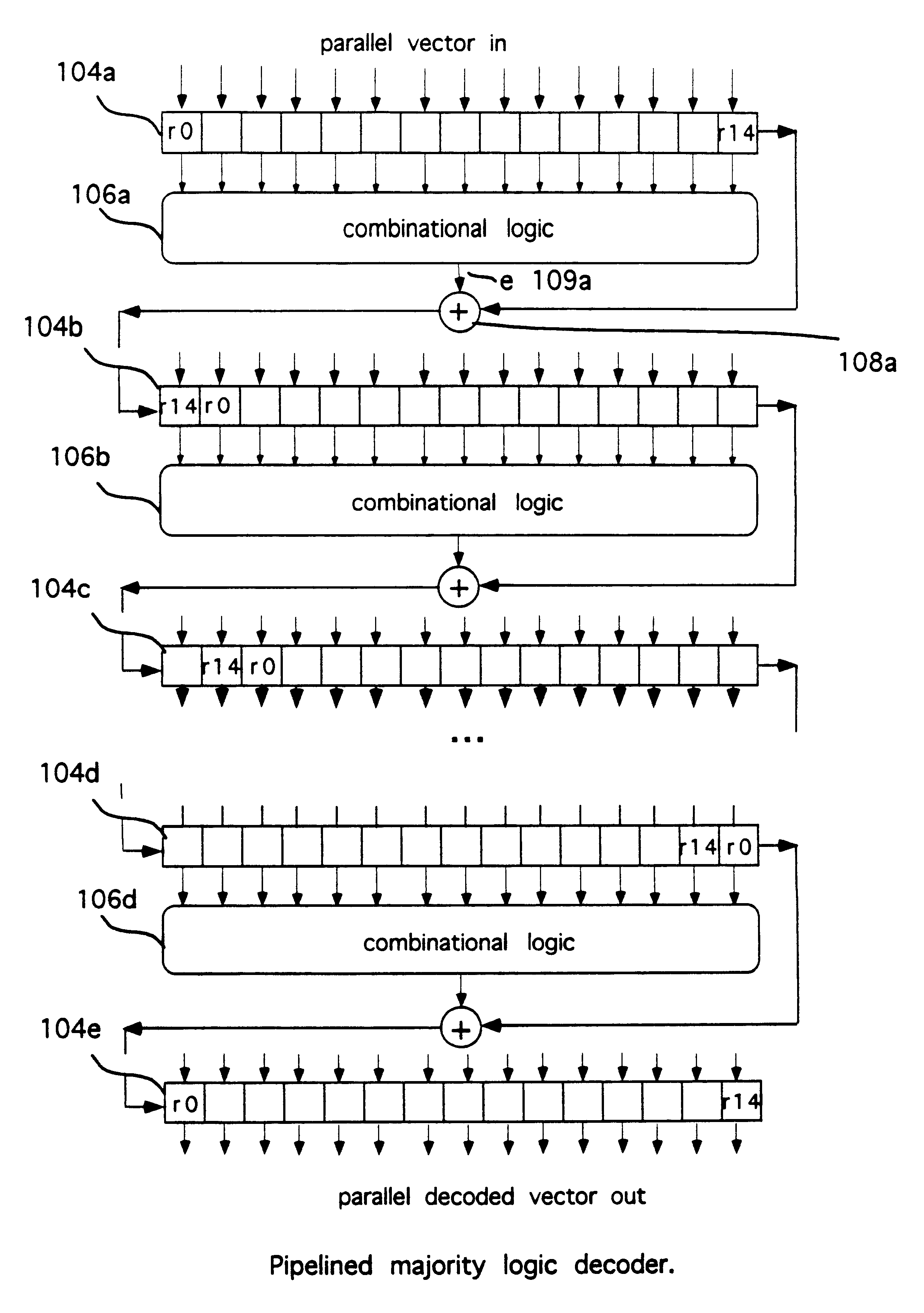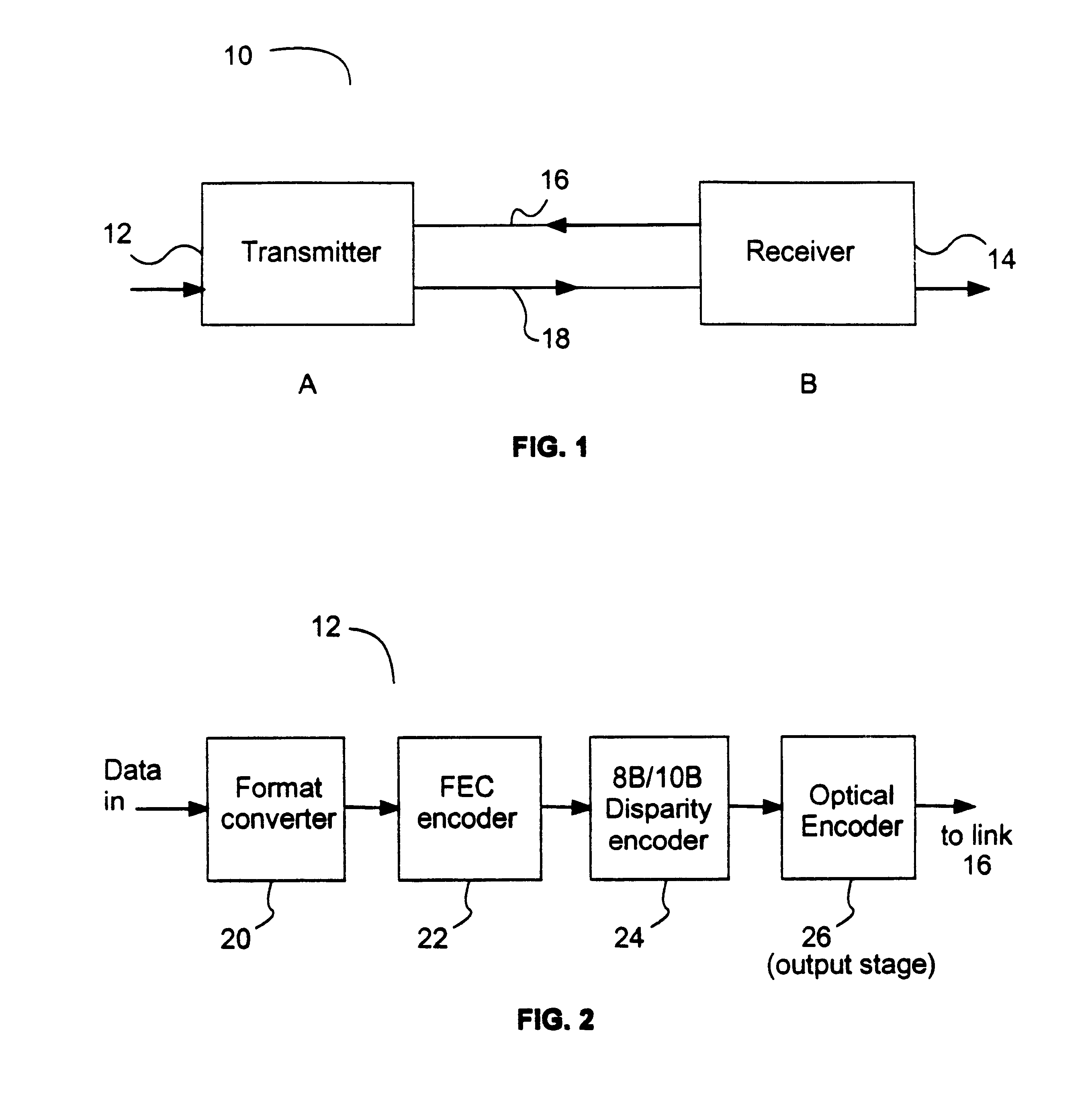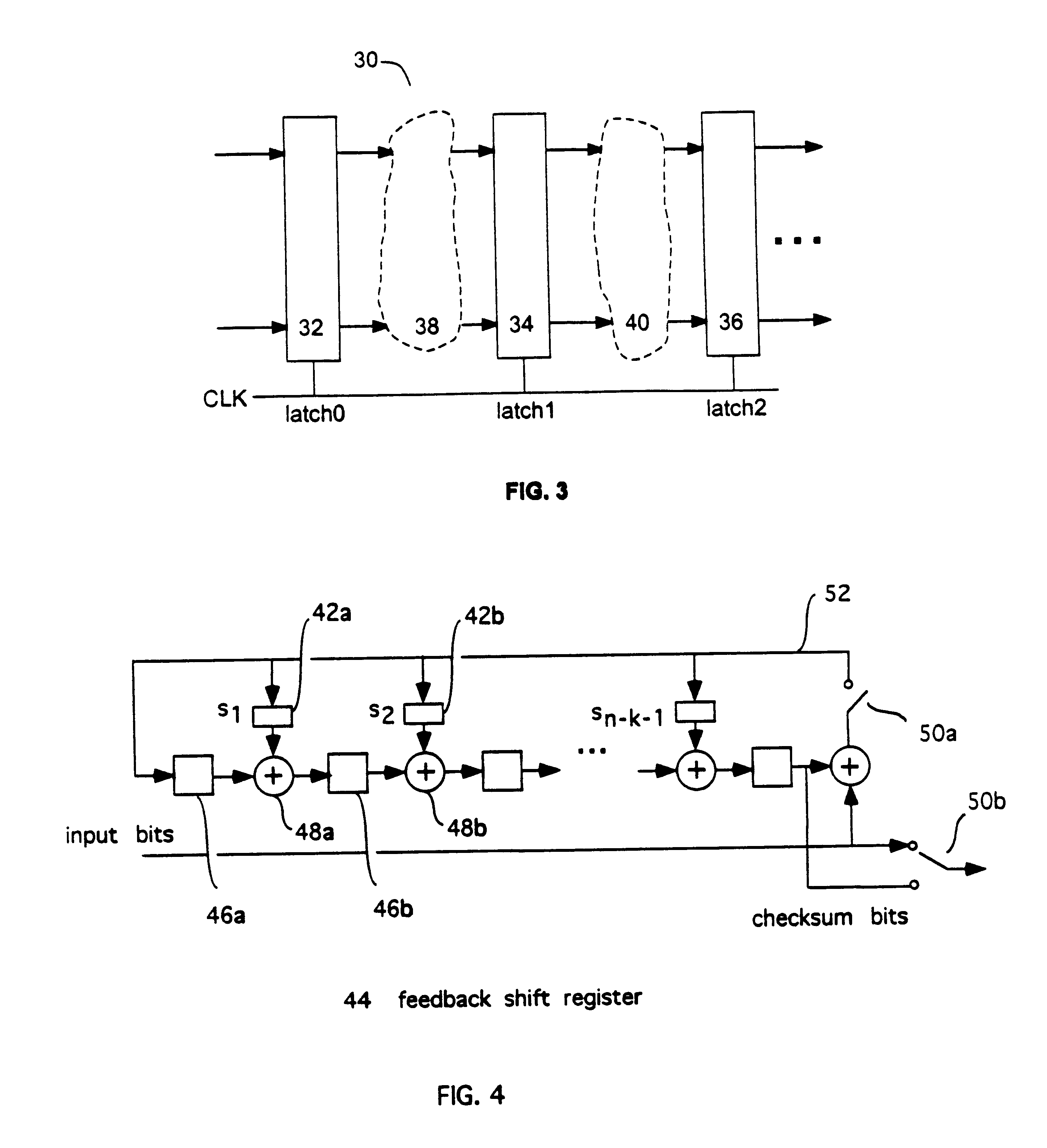Transmitter, receiver, and coding scheme to increase data rate and decrease bit error rate of an optical data link
a technology of optical data transmission and bit error rate, applied in the field of data transmission, can solve the problems of missing the “intelligence” that is included, the lowest level of error control processing of the protocol hierarchy, and the most existing fec scheme is ill suited to the detection and correction of errors at very high speeds, so as to increase the capacity of the optical link
- Summary
- Abstract
- Description
- Claims
- Application Information
AI Technical Summary
Benefits of technology
Problems solved by technology
Method used
Image
Examples
Embodiment Construction
[0102]FIG. 1 illustrates a communications system 10, exemplary of an embodiment of the present invention. System 10 includes exemplary transmitter 12 at A and receiver 14 at B, coupled by forward data link 16, and optionally by reverse data link 18. Preferably system 10 is an optical communications system. As such, transmitter 12 and receiver 14 may be optical transmitters exemplary of embodiments of the present invention. Forward and reverse links 16, 18 are preferably fibre optic links connecting transmitter 12 and receiver 14. As will become apparent forward link 16 carries traffic from transmitter 12 to receiver 14, while reverse link 18 may carry traffic from receiver 14 to transmitter 12. As will be appreciated by those of ordinary skill, forward link 16 and reverse link 18 may be formed on a single physical link, and may for example be separate channels of a wavelength division multiplexed fibre link. Most preferably, forward link 16 may be a bit parallel fiber ribbon, as des...
PUM
 Login to View More
Login to View More Abstract
Description
Claims
Application Information
 Login to View More
Login to View More - R&D
- Intellectual Property
- Life Sciences
- Materials
- Tech Scout
- Unparalleled Data Quality
- Higher Quality Content
- 60% Fewer Hallucinations
Browse by: Latest US Patents, China's latest patents, Technical Efficacy Thesaurus, Application Domain, Technology Topic, Popular Technical Reports.
© 2025 PatSnap. All rights reserved.Legal|Privacy policy|Modern Slavery Act Transparency Statement|Sitemap|About US| Contact US: help@patsnap.com



